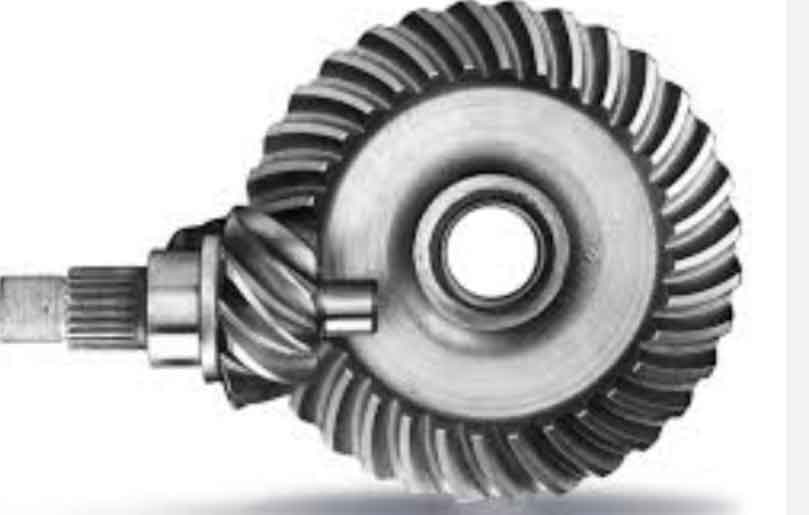Hypoid gears are a type of gear used in various mechanical systems. They are similar to spiral bevel gears but with a few key differences that lend them unique properties and applications. Here’s a detailed look at their design, applications, and advantages:

Design:
- Geometry: Hypoid gears are characterized by their hyperboloid shape. Unlike standard bevel gears, which have a conical geometry, hypoid gears have an axis that does not intersect with the gear face.
- Tooth Profile: They typically feature a spiral tooth profile, which allows for smoother and more gradual engagement compared to straight-cut teeth.
- Axis Offset: A key feature of hypoid gears is the axis offset – the axes of the gears are not on the same plane. This offset enables larger diameter gears and greater tooth contact.
- Lubrication Requirements: Due to their design and the higher pressure on the teeth, hypoid gears require special lubricants to handle the increased load and friction.
Applications:
- Automotive Industry: One of the most common applications of hypoid gears is in the automotive sector, especially in rear-axle drives of vehicles. They are preferred for their ability to transmit power at large angles efficiently.
- Heavy Machinery: They are used in heavy machinery for their ability to bear high loads and operate smoothly under heavy stress.
- Aerospace and Marine: In sectors where precise motion control and durability are required, such as aerospace and marine applications, hypoid gears can be found.
- Power Tools: High-end power tools often use hypoid gears for their durability and efficiency.
Advantages:
- Increased Load Capacity: Due to their increased surface contact, hypoid gears can handle higher loads compared to bevel gears.
- Quieter Operation: The spiral design of the teeth leads to a smoother engagement, resulting in quieter operation, a significant advantage in automotive and machinery applications.
- Higher Torque Transmission: The offset design allows hypoid gears to transmit higher torque levels.
- Compact Design: The non-intersecting shafts allow for more compact gear arrangements, making them suitable for applications where space is a constraint.
- Improved Efficiency: Although slightly less efficient than straight bevel gears, hypoid gears still offer good efficiency, especially under high load conditions.
Limitations:
However, it’s important to note that hypoid gears also have some limitations. They tend to be more expensive to manufacture due to their complex design, and the offset can cause additional stress on the gear’s bearings, requiring careful design and maintenance.
In conclusion, hypoid gears are a crucial component in many mechanical systems, valued for their ability to transmit high torque at offset angles, operate quietly, and handle heavy loads. Their unique design makes them suitable for a variety of applications, particularly where space constraints and noise reduction are important factors.
